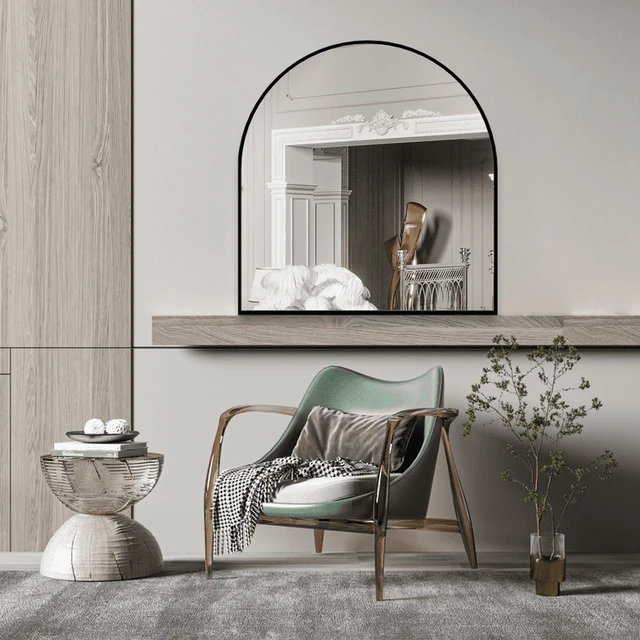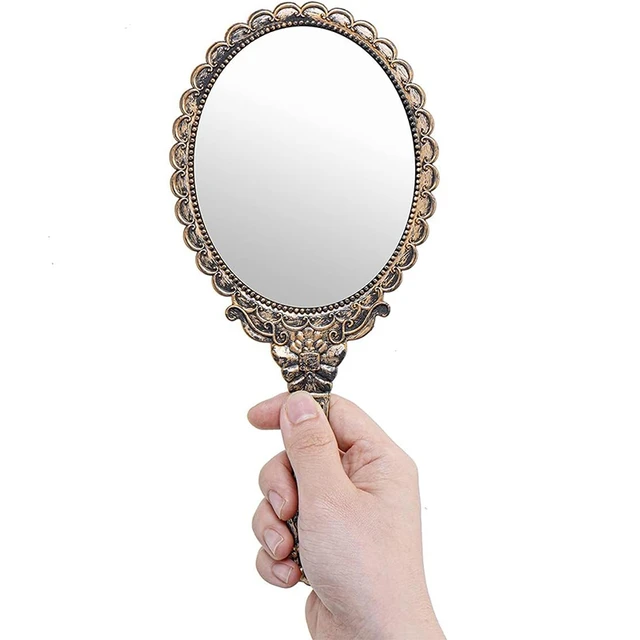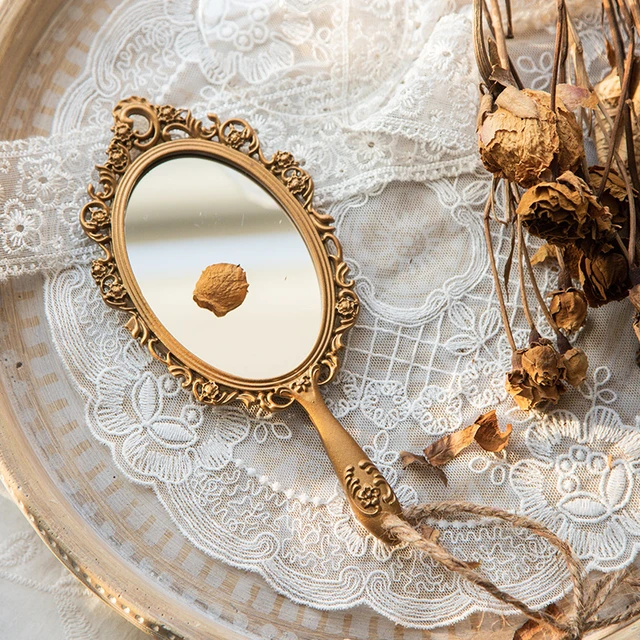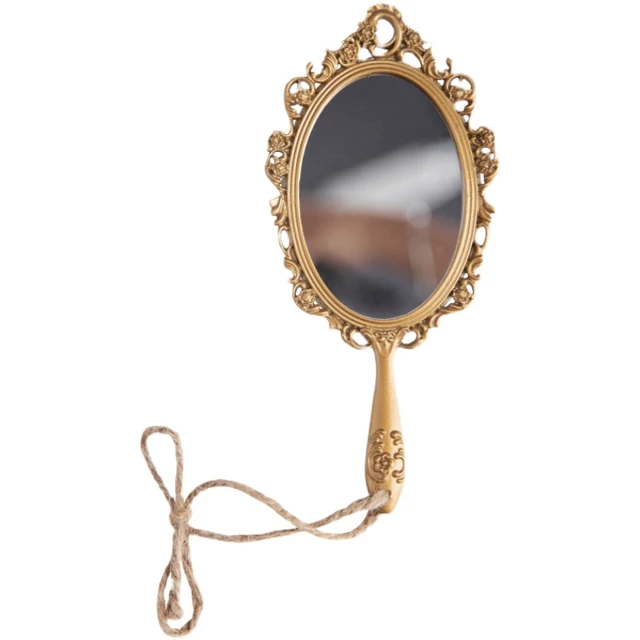Introduction:
Old mirrors hold a certain charm and beauty that is difficult to replicate with newer ones. However, over time, these mirrors can develop various issues such as silvering deterioration, cracks, or damage to the frame. The good news is that many old mirrors can be repaired and restored to their former glory. By utilizing specialized techniques, professional expertise, and careful restoration processes, old mirrors can be rejuvenated and preserved for generations to come. In this article, we will explore the possibility of repairing old mirrors, the common issues they face, the restoration process, and the benefits of preserving these timeless pieces.

Can old mirrors be repaired?
Assessing the Damage:
Before determining if an old mirror can be repaired, it is important to assess the extent of the damage. Consider the following factors:
a. Silvering Deterioration: Check for signs of silvering deterioration, such as dark spots, discoloration, or loss of reflectivity. This is a common issue in old mirrors and may require specialized techniques for restoration.
b. Cracks or Chips: Inspect the mirror for cracks, chips, or scratches. Determine if the damage is limited to the surface or if it extends deeper into the glass.
c. Frame Condition: Examine the condition of the frame, looking for signs of damage, loose joints, or any deterioration in the material.
d. Overall Structural Integrity: Evaluate the overall structural integrity of the mirror. Assess if it is stable, securely mounted, or if any parts require reinforcement or repair.
Common Issues with Old Mirrors:
Old mirrors may face various issues that require repair and restoration. Some of the common problems include:
a. Silvering Deterioration: Over time, the reflective silvering on the back of the mirror can deteriorate, resulting in dark spots, discoloration, or an overall loss of reflectivity. This can significantly affect the mirror’s functionality and appearance.
b. Cracks and Chips: Mirrors are susceptible to cracks or chips, especially if they have been mishandled or subjected to physical impact. These cracks can compromise the structural integrity and reflectivity of the mirror.
c. Frame Damage: The frame of an old mirror can suffer from wear, decay, or damage due to age, environmental factors, or improper handling. Issues such as loose joints, missing or damaged ornamentation, or degraded finishes can affect the mirror’s aesthetics and stability.
d. Backing Deterioration: The backing material of an old mirror, typically made of paper or cardboard, can deteriorate over time. This can result in peeling, discoloration, or warping, affecting the mirror’s overall stability and protection.

Restoration Techniques for Old Mirrors:
Professional mirror restorers utilize specialized techniques to repair and restore old mirrors. These techniques may include:
a. Silvering Restoration: Mirrors with silvering deterioration can undergo a restoration process called resilvering. In this process, the old silvering is removed, and a new reflective coating is applied to restore the mirror’s reflectivity. Resilvering requires expertise and specialized equipment to achieve the best results.
b. Crack Repair: Cracks in the glass can be repaired using specialized resins or adhesives designed for glass restoration. The crack is carefully filled, leveled, and polished to restore the strength and clarity of the glass.
c. Frame Restoration: The frame of an old mirror can be restored by repairing loose joints, replacing missing or damaged ornamentation, and refinishing or repainting the frame to its original condition. This process may involve techniques such as woodwork, gilding, or surface refinishing.
d. Backing Replacement: If the backing material of the mirror is deteriorated, it can be replaced with a suitable material, such as archival-quality paper or acid-free cardboard. This ensures the mirror is adequately protected and supported.

Benefits of Repairing Old Mirrors:
Repairing and restoring old mirrors offer several benefits:
a. Preserving History: Old mirrors carry a sense of history and nostalgia. By repairing them, you preserve their unique character and the stories they hold.
b. Retaining Aesthetics: Old mirrors often feature intricate frames or designs that are difficult to find in newer mirrors. Repairing them allows you to retain and showcase their original aesthetics.
c. Sustainability: By repairing and restoring old mirrors, you contribute to sustainability efforts by reducing waste and promoting the reuse of valuable materials.
d. Cost-Effectiveness: Repairing an old mirror is often more cost-effective than purchasing a new one. Restoration allows you to maintain the sentimental or historical value of the mirror without the expense of a replacement.
e. Customization and Personalization: Restoring an old mirror provides an opportunity for customization and personalization. You can tailor the restoration process to match your preferences, incorporating design elements or finishes that suit your unique style.

Seeking Professional Assistance:
Repairing old mirrors requires specialized skills and expertise. It is often best to seek professional assistance from mirror restoration specialists or antique restorers. Consider the following when seeking professional help:
a. Research and Recommendations: Research reputable mirror restoration services and seek recommendations from trusted sources, such as friends, family, or antique dealers.
b. Experience and Expertise: Look for professionals with extensive experience in restoring old mirrors. Inquire about their specific expertise in resilvering, glass repair, frame restoration, and other relevant techniques.
c. Portfolio and References: Ask for a portfolio of previous restoration work and request references from previous clients. This provides insights into the quality of their craftsmanship and the satisfaction of their customers.
d. Consultation and Assessment: Schedule a consultation with the restoration specialist to discuss the specific issues with your old mirror. They can provide an assessment, explain the restoration process, and offer recommendations tailored to your mirror’s condition.
e. Cost and Timeline: Inquire about the estimated cost and timeline for the restoration. This allows you to plan accordingly and determine if the investment aligns with your budget and expectations.
Maintenance and Care:
After the restoration of an old mirror, proper maintenance and care are essential to preserve its condition and prolong its lifespan. Consider the following practices:
a. Regular Cleaning: Clean the mirror’s surface with a soft, lint-free cloth and a mild glass cleaner. Avoid using abrasive materials or harsh chemicals that may damage the mirror or its finishes.
b. Avoid Moisture and Direct Sunlight: Keep the mirror away from areas of high humidity or direct sunlight, as these conditions can accelerate deterioration and affect the mirror’s stability and reflectivity.
c. Gentle Handling: Handle the restored mirror with care, avoiding excessive pressure or stress on the joints, glass, or frames. Use appropriate mounts or hooks when hanging the mirror to ensure its stability.
d. Periodic Inspections: Periodically inspect the restored mirror for any signs of damage or deterioration. Address any issues promptly to prevent further damage and ensure the mirror’s longevity.

Conclusion:
Old mirrors can often be repaired and restored to their former glory with the help of specialized techniques and professional expertise. Assessing the extent of the damage and understanding the restoration process is crucial in determining the feasibility of repairing an old mirror. By addressing issues such as silvering deterioration, cracks, frame damage, and backing deterioration, old mirrors can be brought back to life, preserving their history, aesthetics, and value. Seeking professional assistance ensures that the restoration process is conducted skillfully and efficiently. With proper maintenance and care, a restored old mirror can continue enchanting generations to come with its timeless beauty.

Leave a Reply